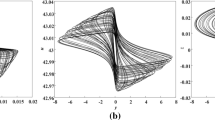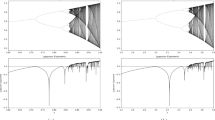Abstract
This paper presents a histogram based reversible data hiding (RDH) scheme, which divides image pixels into different cell frequency bands to sort them for data embedding. Data hiding is more efficient in lower cell frequency bands because it provides prediction that is more accurate. Using pixel existence probability for some pixels of ultra-low cell frequency band, another sorting is performed. Employing these two novel sorting methods, we determine smooth areas of an image more efficient than other schemes. The smoother area of the image is selected for data embedding, the less distortion of the marked image may be achieved. In another proposal, we introduce hiding intensity analysis to determine optimum prediction error to embed data. In comparison with methods that sequentially choose prediction error, this analysis results in better quality of the marked image. In effect, the proposed scheme increases the hiding capacity for a specific level of the distortion comparing to existent RDH algorithms. Experimental results confirm that the proposed algorithm outperforms state of the art ones.









Similar content being viewed by others
References
Abdulla AA (2015) Exploiting similarities between secret and cover images for improved embedding efficiency and security in digital steganography. University of Buckingham
Abdulla AA, Sellahewa H, Jassim SA (2019) Improving embedding efficiency for digital steganography by exploiting similarities between secret and cover images. Multimed Tools Appl 78(13):17799–17823
Coatrieux G, Pan W, Cuppens-Boulahia N, Cuppens F, Roux C (2013) Reversible watermarking based on invariant image classification and dynamic histogram shifting. IEEE Transactions on Information Forensics and Security 8(1):111–120
Dragoi I-C, Coltuc D (2014) Local-prediction-based difference expansion reversible watermarking. IEEE Trans Image Process 23(4):1779–1790
Dragoi I-C, Coltuc D (2015) On local prediction based reversible watermarking. IEEE Trans Image Process 24(4):1244–1246
Fallahpour M (2007) High capacity lossless data hiding based on histogram modification. IEICE Electronics Express 4(7):205–210
Hu X, Zhang W, Hu X, Yu N, Zhao X, Li F (2013) Fast estimation of optimal marked-signal distribution for reversible data hiding. IEEE Transactions on Information Forensics and Security 8(5):779–788
Huang D, Wang J (2020) Efficient reversible data hiding based on the histogram modification of differences of pixel differences. Multimed Tools Appl:1–16
Jung K-H (2017) A high-capacity reversible data hiding scheme based on sorting and prediction in digital images. Multimed Tools Appl 76(11):13127–13137
Kalker T, Willems FM (2002). Capacity bounds and constructions for reversible data-hiding. In: Proc. Int. Conf. on Digital Signal Processing, Santorini, Greece, Greece, July 2002. IEEE, pp 71–76
Kamstra L, Heijmans HJ (2005) Reversible data embedding into images using wavelet techniques and sorting. IEEE Trans Image Process 14(12):2082–2090
Lee S-K, Suh Y-H, Ho Y-S (2006) Public key watermarking for reversible image authentication, Proc Int. Conf. on Image Processing, Atlanta, GA, USA, Oct. 2006. IEEE, pp 1409–1412
Li X, Yang B, Zeng T (2011) Efficient reversible watermarking based on adaptive prediction-error expansion and pixel selection. IEEE Trans Image Process 20(12):3524–3533
Li X, Zhang W, Gui X, Yang B (2013) A novel reversible data hiding scheme based on two-dimensional difference-histogram modification. IEEE Transactions on Information Forensics and Security 8(7):1091–1100
Li X, Zhang W, Gui X, Yang B (2015) Efficient reversible data hiding based on multiple histograms modification. IEEE Transactions on Information Forensics and Security 10(9):2016–2027
Lin S-J, Chung W-H (2012) The scalar scheme for reversible information-embedding in gray-scale signals: capacity evaluation and code constructions. IEEE Transactions on Information Forensics and Security 7(4):1155–1167
Liu Z-L, Shan G (2019) An improved reversible data hiding scheme using layered embedding. Multimed Tools Appl 78(12):16311–16328
Luo L, Chen Z, Chen M, Zeng X, Xiong Z (2010) Reversible image watermarking using interpolation technique. IEEE Transactions on Information Forensics and Security 5(1):187–193
Ma B, Shi YQ (2016) A reversible data hiding scheme based on code division multiplexing. IEEE Transactions on Information Forensics and Security 11(9):1914–1927
Ni Z, Shi Y-Q, Ansari N, Su W (2006) Reversible data hiding. IEEE Transactions on Circuits and Systems for Video Technology 16(3):354–362
Pan Z, Gao X, Wang L, Gao E (2020) Effective reversible data hiding using dynamic neighboring pixels prediction based on prediction-error histogram. Multimed Tools Appl:1–27
Sachnev V, Kim HJ, Nam J, Suresh S, Shi YQ (2009) Reversible watermarking algorithm using sorting and prediction. IEEE Transactions on Circuits and Systems for Video Technology 19(7):989–999
Shi Y-Q, Li X, Zhang X, Wu H-T, Ma B (2016) Reversible data hiding: advances in the past two decades. IEEE Access 4:3210–3237
Thodi DM, Rodríguez JJ (2007) Expansion embedding techniques for reversible watermarking. IEEE Trans Image Process 16(3):721–730
Tian J (2003) Reversible data embedding using a difference expansion. IEEE Transactions on Circuits and Systems for Video Technology 13(8):890–896
Wang J, Ni J, Zhang X, Shi Y-Q (2017) Rate and distortion optimization for reversible data hiding using multiple histogram shifting. IEEE Transactions on Cybernetics 47(2):315–326
Weng S, Chen Y, Ou B, Chang C-C, Zhang C (2019) Improved K-pass pixel value ordering based data hiding. IEEE Access 7:34570–34582
Xiao M, Li X, Wang Y, Zhao Y, Ni R (2019) Reversible data hiding based on pairwise embedding and optimal expansion path. Signal Process 158:210–218
Yang C-H, Tsai M-H (2010) Improving histogram-based reversible data hiding by interleaving predictions. IET Image Process 4(4):223–234
Zhang X (2013) Reversible data hiding with optimal value transfer. IEEE Transactions on Multimedia 15(2):316–325
Zhang W, Hu X, Li X, Yu N (2013) Recursive histogram modification: establishing equivalency between reversible data hiding and lossless data compression. IEEE Trans Image Process 22(7):2775–2785
Zhang W, Hu X, Li X, Nenghai Y (2015) Optimal transition probability of reversible data hiding for general distortion metrics and its applications. IEEE Trans Image Process 24(1):294–304
Zhou J, Au OC (2012) Determining the capacity parameters in PEE-based reversible image watermarking. IEEE Signal Processing Letters 19(5):287–290
Author information
Authors and Affiliations
Corresponding author
Additional information
Publisher’s note
Springer Nature remains neutral with regard to jurisdictional claims in published maps and institutional affiliations.
Rights and permissions
About this article
Cite this article
Mohammadi, A., Nakhkash, M. Sorting methods and adaptive thresholding for histogram based reversible data hiding. Multimed Tools Appl 80, 3307–3325 (2021). https://doi.org/10.1007/s11042-020-09719-3
Received:
Revised:
Accepted:
Published:
Issue Date:
DOI: https://doi.org/10.1007/s11042-020-09719-3




